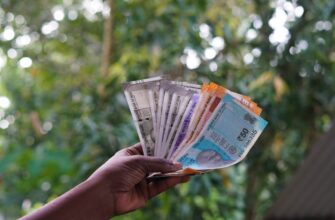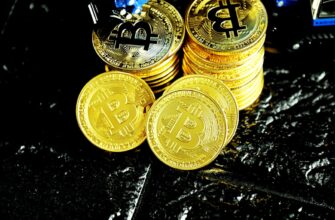- Introduction: Two Financial Worlds Colliding
- What is M-Pesa? Africa’s Mobile Money Phenomenon
- Understanding Bitcoin: The Decentralized Currency
- Bridging the Gap: How M-Pesa and Bitcoin Work Together
- Key Benefits of Combining M-Pesa and Bitcoin
- Challenges and Limitations
- The Future: Mobile Money Meets Blockchain
- FAQ: M-Pesa and Bitcoin Explained
- Can I buy Bitcoin directly through M-Pesa?
- Are Bitcoin-to-M-Pesa transactions legal?
- What fees apply when using M-Pesa for Bitcoin?
- How secure are combined M-Pesa/Bitcoin transactions?
- Will M-Pesa replace Bitcoin?
Introduction: Two Financial Worlds Colliding
In the rapidly evolving landscape of digital finance, M-Pesa and Bitcoin represent groundbreaking innovations reshaping how we transfer value. M-Pesa, Africa’s mobile money pioneer, has brought banking to millions of unbanked users through simple SMS technology. Bitcoin, the world’s first decentralized cryptocurrency, offers borderless transactions via blockchain. Together, they signal a seismic shift in financial accessibility – but how do they intersect? This article explores the synergy, challenges, and transformative potential of M-Pesa and Bitcoin integration.
What is M-Pesa? Africa’s Mobile Money Phenomenon
Launched in Kenya in 2007 by Safaricom, M-Pesa (“M” for mobile, “Pesa” meaning money in Swahili) revolutionized financial inclusion. Unlike traditional banking, it requires only a basic phone to:
- Send/receive money via SMS
- Pay bills and buy airtime
- Access microloans and savings
- Withdraw cash at agent kiosks
With over 50 million active users across seven African countries, M-Pesa demonstrates how mobile technology can leapfrog banking infrastructure barriers.
Understanding Bitcoin: The Decentralized Currency
Bitcoin emerged in 2009 as a peer-to-peer electronic cash system operating without banks or governments. Key features include:
- Blockchain technology ensuring transparent, immutable transactions
- Fixed supply capped at 21 million coins
- Global accessibility with internet connection
- Pseudonymous ownership through digital wallets
Unlike M-Pesa’s centralized model, Bitcoin enables censorship-resistant transfers, making it particularly valuable for cross-border payments and inflation-hedging.
Bridging the Gap: How M-Pesa and Bitcoin Work Together
While not natively integrated, third-party platforms like BitPesa (now AZA Finance) and Paxful enable Bitcoin purchases using M-Pesa in Kenya, Tanzania, and Ghana. The process typically involves:
- Registering on a crypto exchange supporting M-Pesa
- Verifying identity (KYC requirements)
- Selecting “M-Pesa” as deposit method
- Confirming transaction via SMS prompt
- Receiving Bitcoin in your exchange wallet
This synergy combines M-Pesa’s grassroots reach with Bitcoin’s global network, creating on-ramps to cryptocurrency for underserved populations.
Key Benefits of Combining M-Pesa and Bitcoin
The convergence offers transformative advantages:
- Financial Inclusion: Unbanked M-Pesa users access global crypto markets
- Reduced Remittance Costs: Sending money abroad drops from ~10% fees to under 3%
- Inflation Protection: Bitcoin provides hedge against currency devaluation in volatile economies
- Micro-Investment Opportunities: Users start investing with small amounts (even $1)
Challenges and Limitations
Despite potential, significant hurdles remain:
- Regulatory Uncertainty: Governments struggle to classify crypto (e.g., Kenya’s Central Bank warnings)
- Technical Barriers: Wallet management and security intimidate new users
- Volatility Risk: Bitcoin’s price swings challenge its use for daily payments
- Scalability Issues: M-Pesa processes 1,000+ transactions/second vs Bitcoin’s ~7
The Future: Mobile Money Meets Blockchain
Emerging trends suggest deeper integration:
- Stablecoins (e.g., USDT) could enable M-Pesa-to-crypto transfers with less volatility
- Central Bank Digital Currencies (CBDCs) may adopt hybrid models
- Lightning Network could accelerate Bitcoin transaction speeds for micropayments
- Safaricom’s potential blockchain experiments hint at future native support
FAQ: M-Pesa and Bitcoin Explained
Can I buy Bitcoin directly through M-Pesa?
Not natively, but exchanges like LocalBitcoins allow M-Pesa payments to sellers. Always verify platform legitimacy first.
Are Bitcoin-to-M-Pesa transactions legal?
In Kenya and Tanzania, yes – but regulations evolve. Check local guidelines as some nations restrict crypto-fiat conversions.
What fees apply when using M-Pesa for Bitcoin?
Expect 3-5% exchange fees plus M-Pesa transfer costs (up to 1% for large amounts). Total costs still beat traditional remittance services.
How secure are combined M-Pesa/Bitcoin transactions?
M-Pesa uses SIM encryption while Bitcoin employs blockchain security. Risks include phishing scams – never share PINs or private keys.
Will M-Pesa replace Bitcoin?
Unlikely. They serve different needs: M-Pesa excels at local fiat transactions; Bitcoin enables global, decentralized value storage. Synergy is the real opportunity.








